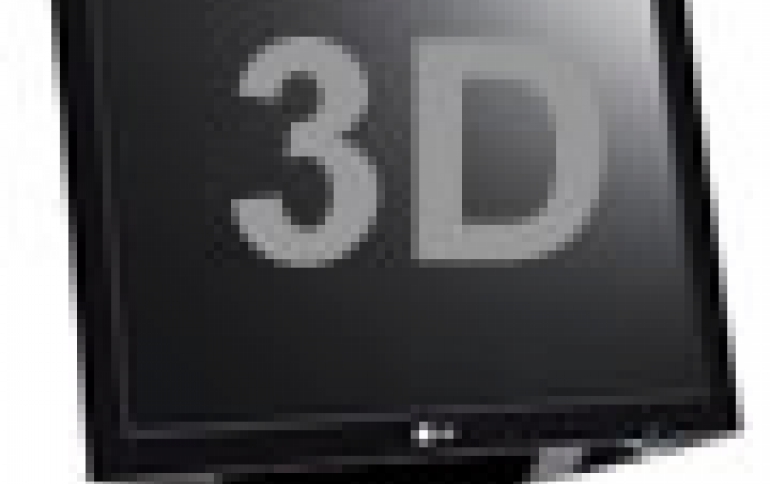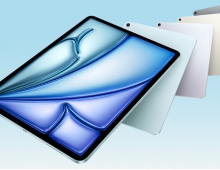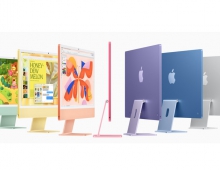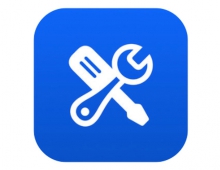
Apple Entrnce Into The 3D Fray May Help 3D Become Mainstream
On December 2, Apple was granted a patent on a 3D projection system that will allow multiple users to experience 3D content at different viewing angles without the need for special glasses.
The fact that Apple is researching and developing 3D technology is not surprising given 3D technology's rise in awareness, popularity, and availability. But consumers have been slow to adopt 3D in the home due to issues like high device acquisition costs, lack of 3D content, and most notably, the need for special, costly glasses to view 3D content.
But Apple is taking the right steps to remove this obstacle. The company's 3D patent, initially filed in 2006, states that existing 3D technology methods are "impractical, and essentially unworkable, for projecting a 3D image to one or more casual passersby, to a group of collaborators, or to an entire audience such as when individuated projections are desired." The patent suggests that, by detecting the general location of each user in the viewing area and adjusting accordingly, multiple images can be projected to different points on a special reflective screen, allowing multiple users to simultaneously view the 3D image from different points in the room without the need for glasses.
Autostereoscopic 3D, or glasses-free 3D, is currently available. However, its development has been aimed mainly at mobile applications, like smartphones and handheld game consoles. For example, Sharp is launching a glasses-free 3D smartphone in the US in 2011. Nintendo is set to launch its 3DS handheld game console in Japan, Europe, and the US in the first half 2011. However, a notable difference between these 3D-enabled mobile devices and Apple's 3D projection system is that these mobile devices are optimized for a single viewer experience. Apple?s 3D projection system would be optimized for a multiple viewer environment?one that is much more suited to driving 3D adoption in the home.
Stephanie Ethier, Senior Analyst at Ins-Stat, believes that possible applications for Apple's 3D projection system could be 3D gaming on Macs. The system could also support a significant Apple TV upgrade, which is already HD compatible. "Regardless of what direction Apple takes, the company has a way of entering a nascent market, and driving it into the mainstream," Ethier said. "This is evidenced by a whole host of Apple introductions. Before the first iPod introduction in 2001, the portable MP3 player market, already five years old, was struggling to push beyond early adopters. And although video was already a feature on many portable media players by 2002, it took Apple's 2005 introduction of the video-enabled iPod to make the mainstream consumer demand video. The iPhone revolutionized the "app" and "smartphone" market; and finally, who wanted a tablet until the iPad introduction?"
The market for 3D in the home and in mobile devices is limited today. However, In-Stat claims that with the continued development in glasses-free technology - and a rather certain Apple entry - 3D projection will undoubtedly become a part of our mainstream life.
But Apple is taking the right steps to remove this obstacle. The company's 3D patent, initially filed in 2006, states that existing 3D technology methods are "impractical, and essentially unworkable, for projecting a 3D image to one or more casual passersby, to a group of collaborators, or to an entire audience such as when individuated projections are desired." The patent suggests that, by detecting the general location of each user in the viewing area and adjusting accordingly, multiple images can be projected to different points on a special reflective screen, allowing multiple users to simultaneously view the 3D image from different points in the room without the need for glasses.
Autostereoscopic 3D, or glasses-free 3D, is currently available. However, its development has been aimed mainly at mobile applications, like smartphones and handheld game consoles. For example, Sharp is launching a glasses-free 3D smartphone in the US in 2011. Nintendo is set to launch its 3DS handheld game console in Japan, Europe, and the US in the first half 2011. However, a notable difference between these 3D-enabled mobile devices and Apple's 3D projection system is that these mobile devices are optimized for a single viewer experience. Apple?s 3D projection system would be optimized for a multiple viewer environment?one that is much more suited to driving 3D adoption in the home.
Stephanie Ethier, Senior Analyst at Ins-Stat, believes that possible applications for Apple's 3D projection system could be 3D gaming on Macs. The system could also support a significant Apple TV upgrade, which is already HD compatible. "Regardless of what direction Apple takes, the company has a way of entering a nascent market, and driving it into the mainstream," Ethier said. "This is evidenced by a whole host of Apple introductions. Before the first iPod introduction in 2001, the portable MP3 player market, already five years old, was struggling to push beyond early adopters. And although video was already a feature on many portable media players by 2002, it took Apple's 2005 introduction of the video-enabled iPod to make the mainstream consumer demand video. The iPhone revolutionized the "app" and "smartphone" market; and finally, who wanted a tablet until the iPad introduction?"
The market for 3D in the home and in mobile devices is limited today. However, In-Stat claims that with the continued development in glasses-free technology - and a rather certain Apple entry - 3D projection will undoubtedly become a part of our mainstream life.





















